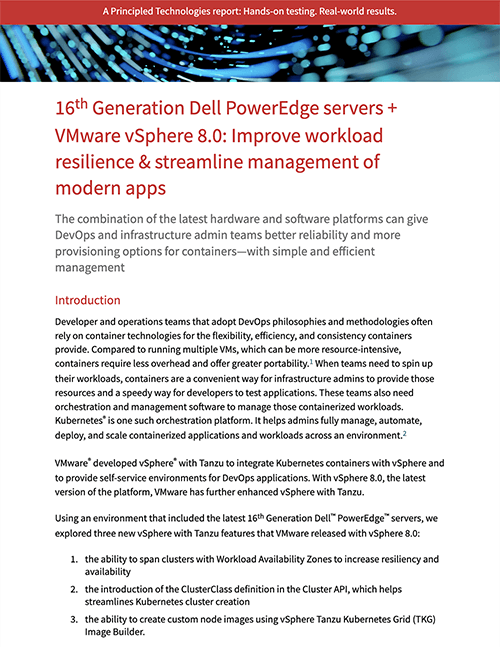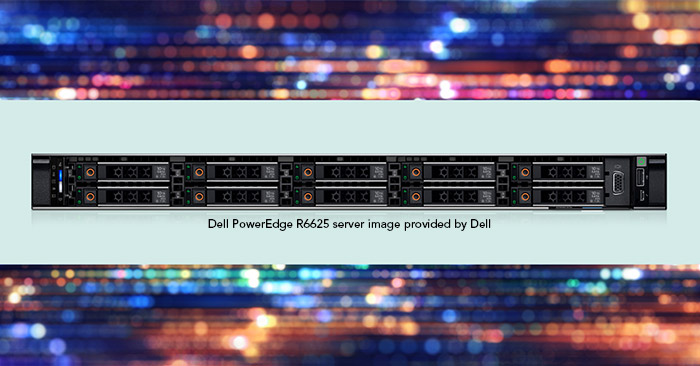
In the modern world, we expect our go-to apps to respond quickly and work flawlessly—at any time. Successful apps meet those expectations, and many of their developers owe a good bit of their rapid deployment and dependability to the efficiency of containerized environments. For the developer and operations teams that deliver modern apps, container technologies provide the ability to rapidly test and deploy those apps at scale. Container management can, though, be complicated. VMware vSphere with Tanzu 8.0 is a Kubernetes-based container orchestration platform that offers several proprietary features to help simplify container management, improve reliability, and facilitate more efficient application development processes.
We conducted a deep-dive exploration of three new Tanzu 8.0 management features in a containerized environment built around new 16th Generation Dell PowerEdge R6625 servers. We tested the ability of Tanzu’s Workload Availability Zones feature to span clusters and increase resource resiliency. We also tested the ability of the new ClusterClass resource to help streamline cluster creation in a cloud-agnostic format, and we assessed how well the Tanzu Kubernetes Grid Image Builder tool helps admins create custom node images. We found that each of these features worked well and could aid both development and infrastructure teams in a DevOps context.
For organizations that want to take full advantage of the benefits of containerization, upgrading to a combination of 16th Generation Dell PowerEdge servers and VMware vSphere with Tanzu 8.0 could improve workload resiliency, save admin time, and help streamline the management and security of their apps, paving the way for more efficient application development processes.
To learn more about the benefits of running VMware vSphere with Tanzu 8.0 on latest-gen Dell PowerEdge servers, check out the report below.
Principled Technologies is more than a name: Those two words power all we do. Our principles are our north star, determining the way we work with you, treat our staff, and run our business. And in every area, technologies drive our business, inspire us to innovate, and remind us that new approaches are always possible.






